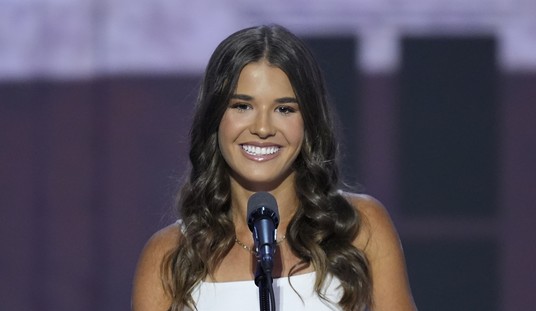Cue the lady driver jokes. This story will probably inspire some, but I thought it was interesting and a little humorous, too, so I wanted to share it with you.
Before today, I'd never actually heard of this woman. Born on Nov. 11, 1886, in Barbadoes Township, N.J., she attended Vassar College from 1903 to 1905, and in 1906, she married future Republican congressman John R. Ramsey. The following year, the couple had a son, John Rathbone Ramsey, Jr., and eventually, they'd have a daughter, Alice Valleau Ramsey, but somewhere in between, she did something that made her an iconic figure in obscure United States history.
Her name was Alice Huyler Ramsey.
One day, shortly after they were married, Alice was driving her horse and buggy down the road when a car sped by her and spooked her horse. John, worried for her safety, bought her a red Maxwell Runabout for about $825. He hired an agent to teach her how to drive, and the rest is history. Alice loved driving and put over 6,000 miles on the car that summer, going back and forth on the country roads near their home in New Jersey.
By September, she decided to enter the American Automobile Association's (AAA) Montauk Point endurance race, which would see her drive 200 miles between Philadelphia and Montauk, N.Y. She was only one of two women in the race, and she earned a perfect score. The story goes that another driver in the race was a man who worked for the car company Maxwell-Briscoe. He suggested she make a cross-country trip as a publicity stunt for the company. They'd pay for everything and provide the car, any necessary replacement parts, and roadside assistance. All she had to do was drive and let them take her picture. They thought it might encourage more women to purchase and drive their cars.
So, on June 9, 1909, Alice, who was 22 years old at the time, set out on the journey. She brought along her two sisters-in-law, who were in their forties, and her best friend, Hermine Jahns, who was just 19 years old. Alice was the only woman who knew how to drive.
Despite starting in a downpour, initially, the journey from Manhattan to San Francisco was mostly smooth. The trip would last 3,800 miles, and only 150 miles of those roads were paved. In Ohio, she hit a personal best speed of 42 miles per hour. She had some AAA maps to help guide her, as well as the automotive "Blue Book" series, which relied on local landmarks to guide drivers (think "turn left at the green house with the red barn" kind of directions).
The problem is that those sources didn't do much to cover the land west of the Mississippi River. Even so, Alice and her crew carried on, often crossing creeks and rivers, using train tracks, and following old wagon trails. They'd scan the horizon for telephone poles, a sure sign that a town was near — where they could stop to eat in a restaurant, have a picnic, or sleep at a hotel. One hotel they stopped at had bed bugs, so the ladies had to sleep on desks in the office. At one point, they even camped out next to an overflowing creek, waiting for the water to recede.
The woman saw their share of mishaps along the way, as well. While Ohio was the easiest state to pass through, Iowa was the worst. It rained daily, and it took 12 or 13 days (depending on who you ask). They had to sleep in the car at one point because of a washed-out bridge. Axels broke. Wheels got stuck in the mud. Horses had to tow them. Spark plugs got wet. At one point, the radiator overheated, and the ladies had to use their toiletry holders to bring water "ounce by ounce" from the ditch to fix it. They even forgot to put gas in the car a time or two.
Along the way, Alice had to change tires herself 11 times and perform other work on the vehicle.
There were two particularly humorous stories from her trip. During one, she and the other women found themselves in the midst of a manhunt for a murderer. The authorities who stopped them and searched their car didn't believe them at first when they told them they were just an innocent group of women driving all the way across the country — something that a man hadn't even done until just a few years prior. At another point, in Nebraska, they ran into a group of Pawnee Indians armed with weapons, and they feared for their lives. As it turns out, they were just hunting for jackrabbits, not lady drivers.
The trip took about three weeks longer than expected, but on Aug. 7, 1909, the four women finally arrived at their destination. Alice became something of a celebrity, but after a few days, she was ready to return home to her family and took a train back to New Jersey. For what it's worth, Maxwell-Briscoe claimed that the trip went off without a hitch, but we all know better. Decades later, Alice wrote a book that recounted the journey called "Veil, Duster, and Tire Iron."
She'd go on to make that drive 31 times throughout her lifetime, at one point taking her grandson, Peter, along. She also took numerous road trips in Europe until her doctor told her to stop due to some heart issues, and she maintained a driver's license until she was 95 years old. Alice even served as the president of the Women’s Motoring Club of New York.
Alice died in 1983, but in 2000, she became the first woman inducted into the Automotive Hall of Fame. AAA named her the "Woman Motorist of the Century," and the Automobile Manufacturers Association named her their "First Lady of Automotive Travel."
Regardless of what anyone calls her, she'll always be Alice, the first woman who drove from coast to coast in the United States.










